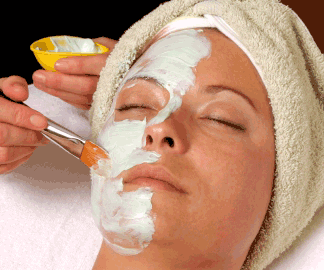Esthetician Jobs
Careers in Skin Care
Some cosmetologists choose to focus on the skin, and provide facials, massage, and other types of skin care to cleanse and improve the complexion of their clients. These cosmetologists, who may also be called estheticians, are skincare specialists who advise their clients regarding how to take care of their skin and what products are suitable for their skin type. Many have specialized training in certain skincare product lines, and also sell these products to their clients.

Massage Therapy
Massage is an integral part of many salon services, including shampoos, manicures, pedicures, and facials, and has a prominent part in the beauty school curriculum. It is both relaxing as well as therapeutic for the client. Some cosmetologists may choose to focus solely on massage, and will pursue further training in related careers such as massage therapy. Massage therapists are not necessarily licensed cosmetologists, but many cosmetologists find that they enjoy this aspect of their business and decide to add massage therapy to the list of services that they provide to clients.
Facials
Facials are a popular service performed by cosmetologists in salons as well as in spas and resorts. Cosmetologists who perform facials often have additional training in skincare. Facials typically include a thorough cleansing of the skin, an analysis to determine whether special services such as exfoliation and extraction are needed, and massage using techniques such as effleurage (a gliding stroke) to relax the client and stimulate the skin.
 Esthetician Applying a Facial
Esthetician Applying a Facial
The price of a facial will vary, with the average being approximately $75. Facials are usually costlier in metro areas, resorts and spas.
Cosmetologists can also specialize as makeup artists. The most successful makeup artists are creative, have a good eye for color, are patient and tactful, possess good communication skills, understand facial bone structure, have good hand-eye coordination and work well under pressure. Makeup artists work in a wide variety of capacities and settings. They might apply makeup to a client for a special occasion such as a wedding, or they may work with models, actors, and other performers involved with stage, film, and television productions to enhance or alter their appearance or to achieve special effects.
After completing cosmetology training, some cosmetologists may pursue additional training in a service known as “permanent makeup.” These specialty programs teach students the techniques for applying “cosmetic tattoos” such as permanent eye liner and permanent lip liner. The amount of training required varies greatly state-by-state, but the Society of Permanent Cosmetic Professionals (SPCP) recommends that permanent cosmetic technicians receive a minimum of 100 hours of training in at least one modality or type of permanent cosmetic machine from a qualified instructor with professional experience. This is not to be taken lightly, as mistakes are permanent and are displayed prominently on the client’s face. Nevertheless, permanent makeup continues to gain in popularity, despite the cost of $400-$800 per procedure.
Hair Removal Jobs
Cosmetologists are also trained to remove unwanted hair, or to make it less noticeable. They can remove hair temporarily (by tweezing or waxing) or permanently (by laser or electrolysis).
Cosmetologists commonly remove hair from the eyebrow, lip and chin area, the bikini area, and also legs and underarms.
Tweezing is removing hair one at a time with a tweezers; it is usually used in the eyebrow area, sometimes in combination with waxing. Waxing removes the hair at the root, and will leave the skin soft and smooth for up to four weeks. It is typically performed on the face, bikini, underarm, and leg areas. Laser and electrolysis are permanent hair removal techniques not usually included in the usual beauty school curriculum; cosmetologists take specialized courses in these procedures and often focus their business solely upon them.
Electrolysis
Electrolysis involves going after hairs one by one by inserting a very fine needle into each hair follicle. An electric current cauterizes the blood vessel that makes the hair grow, eliminating any future growth. It is not a painless procedure-the sensation is similar to a static electricity shock. The price is not painless either-cosmetologists trained in electrolysis charge an average of $100 an hour for their services. Because it is a time-consuming and expensive process, electrolysis is usually not recommended for large areas, like the legs.
Laser Hair Removal
Laser hair removal, which involves killing the hair follicle with a beam of light, is less painful than electrolysis, but must be performed over and over, sometimes four to six times on the same area, before the area will be hair-free. Once the necessary treatments are completed, the area will remain 80% hair-free for at least one year, and up to ten years. Clients will need to do some at home touchups with either a razor or with a depilatory to keep themselves “fuzz-free” in between sessions. Laser hair removal is a service which can be quite lucrative for the cosmetologist: one 15-20 minute session costs anywhere from $150-$250. One session is usually enough to cover the bikini or underarm area, but only half the time needed to do the legs.


 Teach English in Asia
Teach English in Asia  Cruise Ship Jobs
Cruise Ship Jobs  Alaska Fishing Industry Jobs
Alaska Fishing Industry Jobs  Sharing Economy / Gig Economy
Sharing Economy / Gig Economy